Prague
Part 1 – A morning walk through the old town
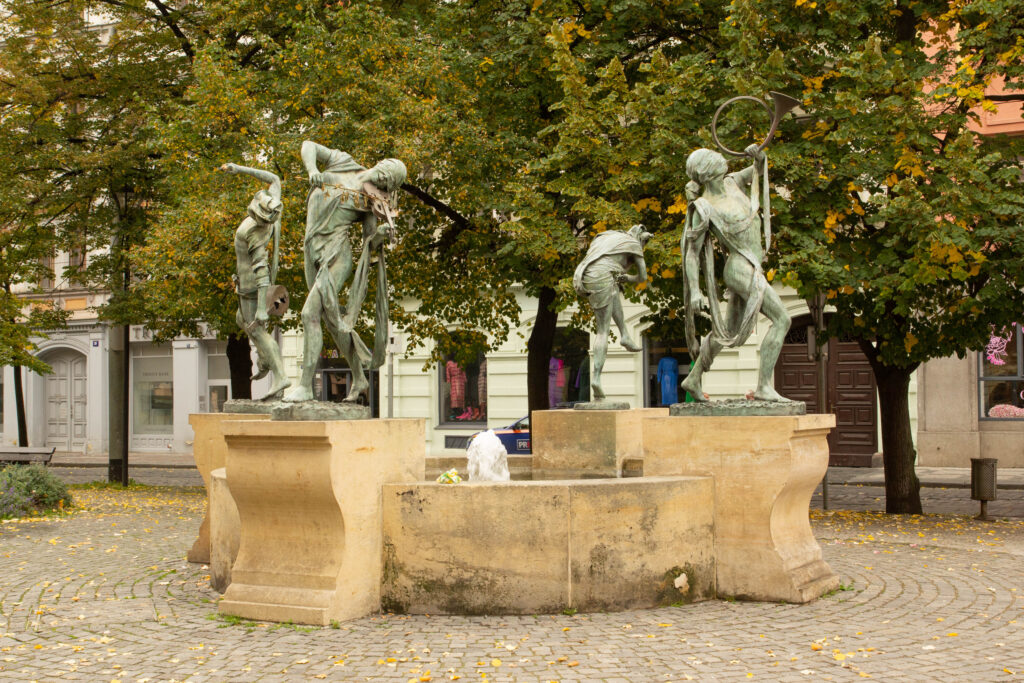
Our morning started with the most amazing continental breakfast, with a stunning selection of fresh and preserved fruits, cereals, pastries, cold meats, sausages and egg dishes on offer. My plans to gently ease my troubled stomach back into the eating game were being sorely tested, but I managed to confine myself to just three courses. After breakfast we met up with our guide Pavlina and made our way outside towards the old town.
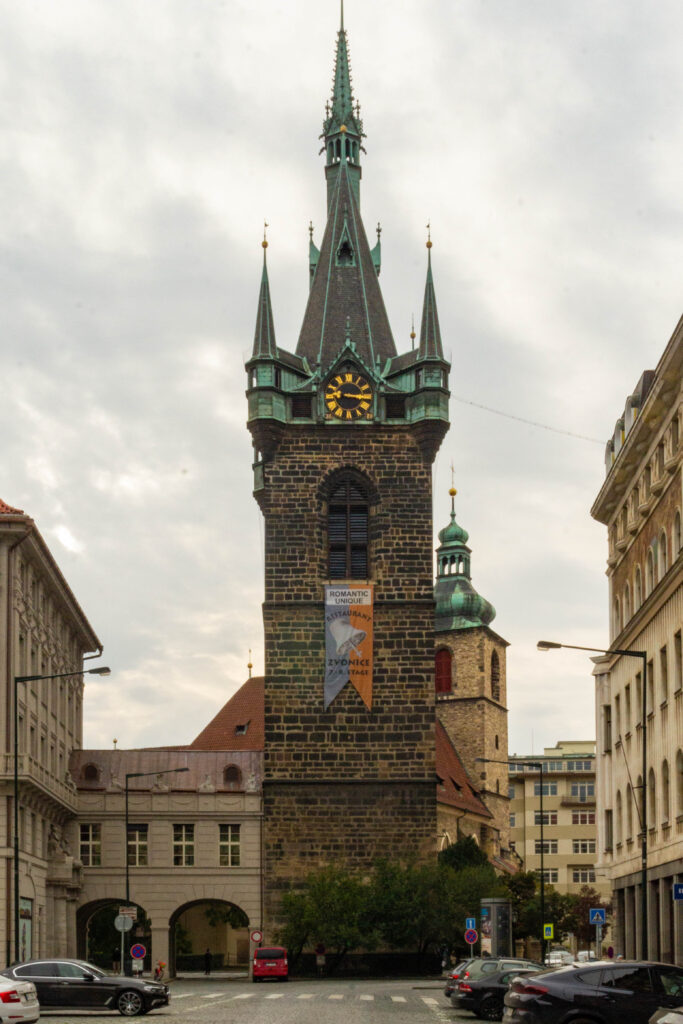
Just around the corner from the hotel is the Powder Tower, a 15th Century tower that was one of the original city gates, later used in the 17th Century to store gunpowder, hence the name. This would prove to be a very useful landmark for use as a reference point when navigating our way through the twisting streets of the old town.
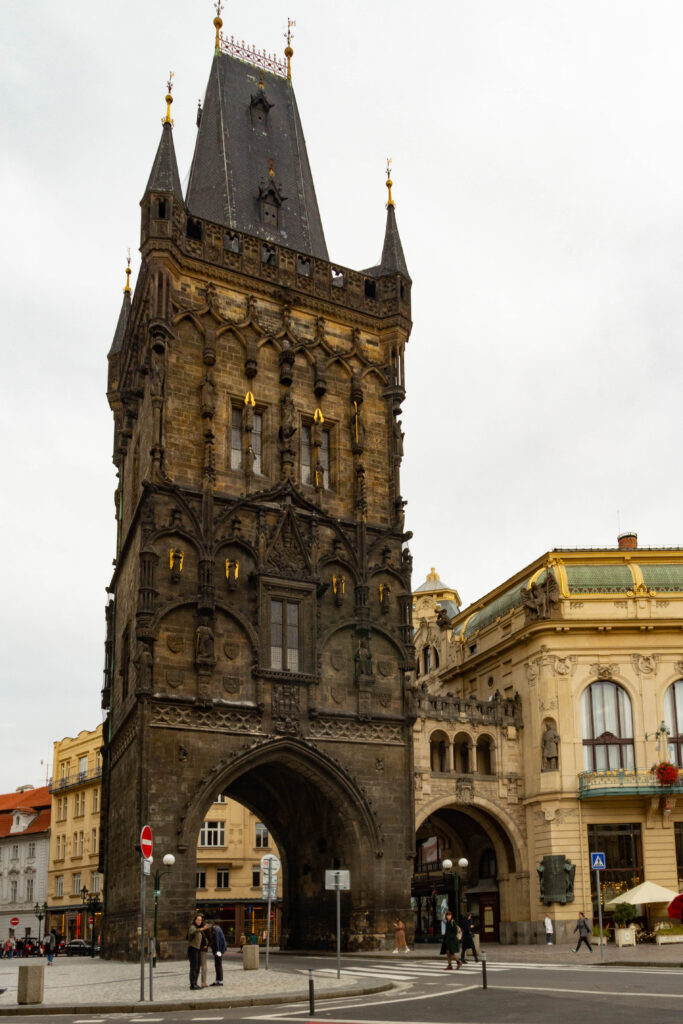
Right next door to the tower is the Obecní dům, or Municipal House, an amazing Art nouveau venue that hosts classical concerts, opera & ballet and lots of other events.
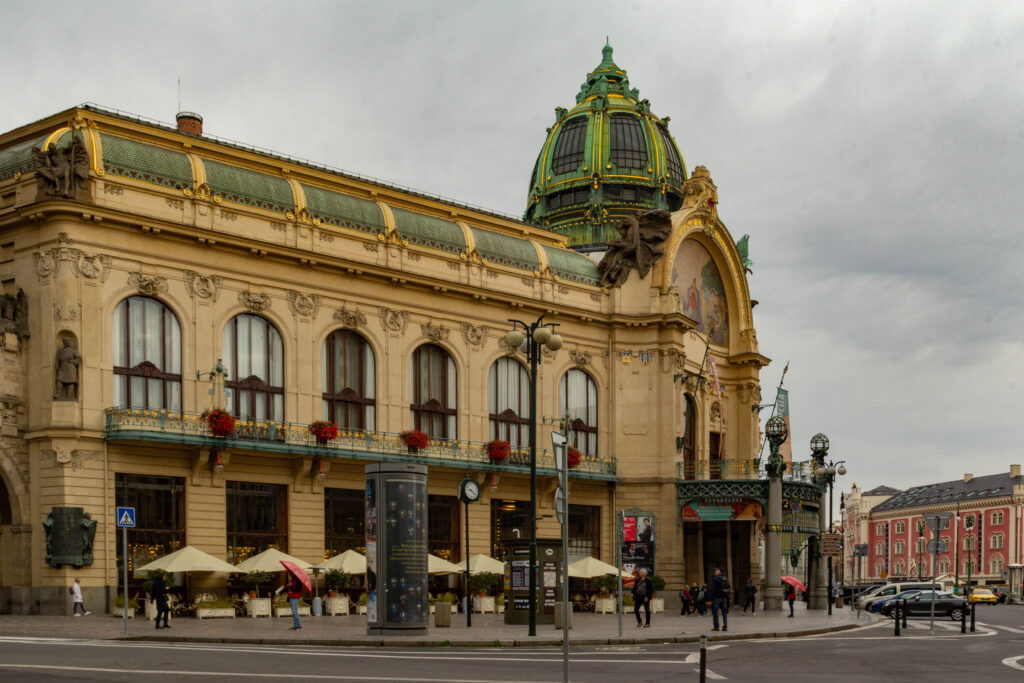

One thing that is abundantly clear about Prague from the moment you start walking through the city is that there is an enormous mix of different architectural styles, from Gothic and Baroque through to Art nouveau, Cubist and even communist era Brutalist. What it all adds up to is a stunning city that is vibrant and ever changing.
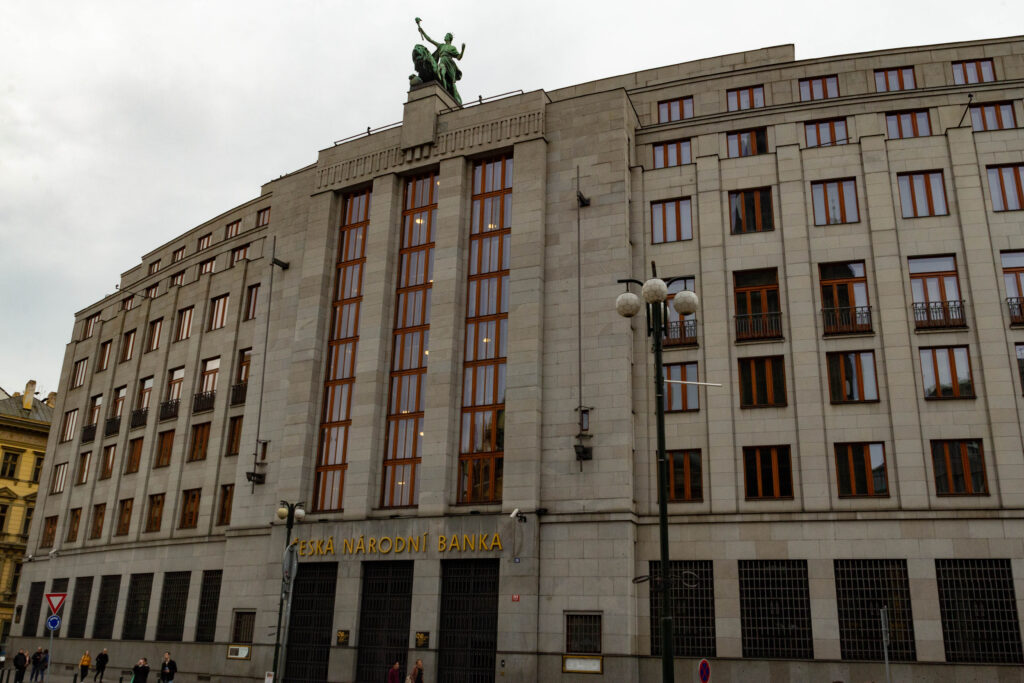
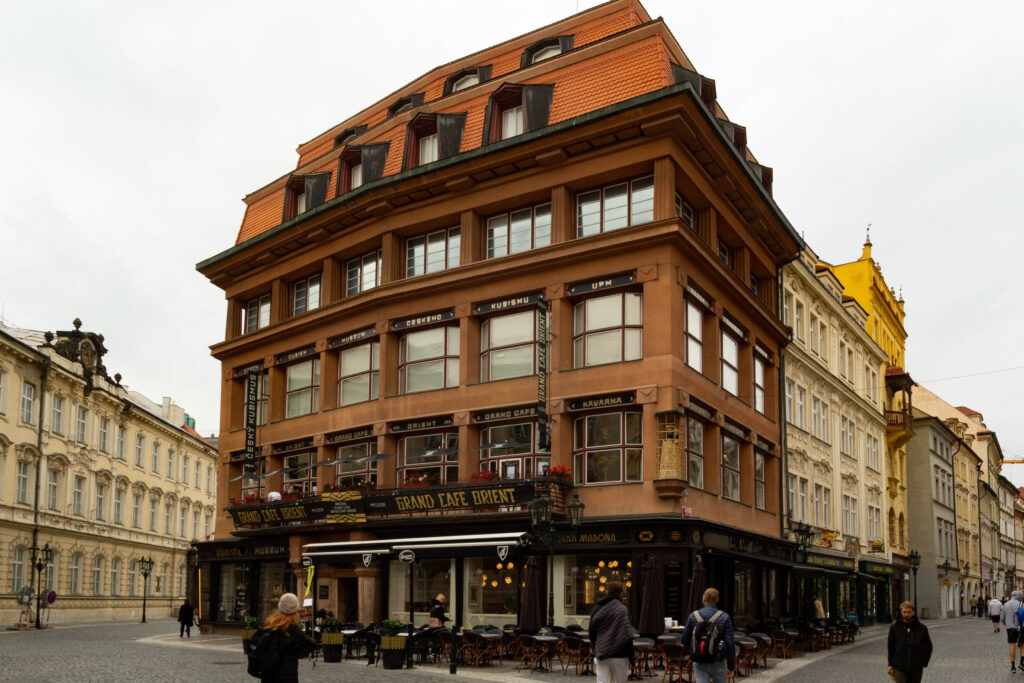
We walked along the street of Celetná, one of the oldest streets in Prague and part of the historic Royal Route where kings of old would pass through the city on their way to the castle. The street was named after a bread that was made in the many bakeries along the street during the Middle Ages, although the bakeries have long since been replaced by a more eclectic mix of high-end toy stores and Bohemian crystal shops.
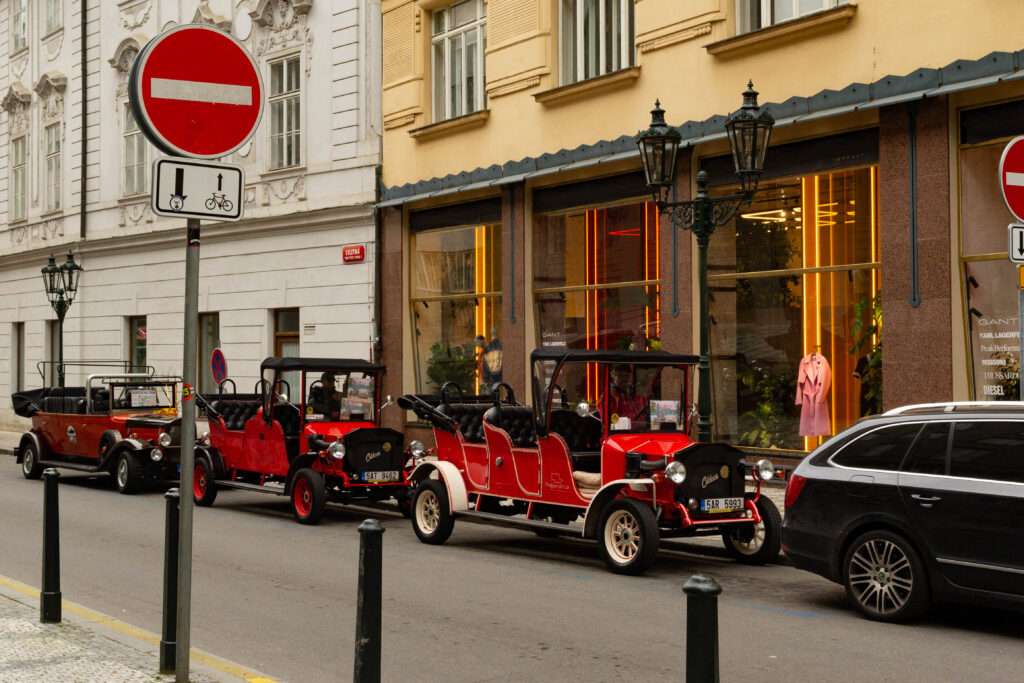


Emerging onto Staroměstské náměstí, the Old Town Square, we were just in time to catch the hourly display on the mechanical clock, an experience that the famous American tour guide Rick Steeves promised would be “underwhelming”. The display begins with a chime as the skeleton representing Death starts to ring its bell, symbolising that Death is marking time for us all. Meanwhile the doors slide open to reveal the Walk of the Apostles, as various figures glide their way past the open windows. It’s all over within a few seconds and the doors clang shut as the clock tower bell starts to chime.
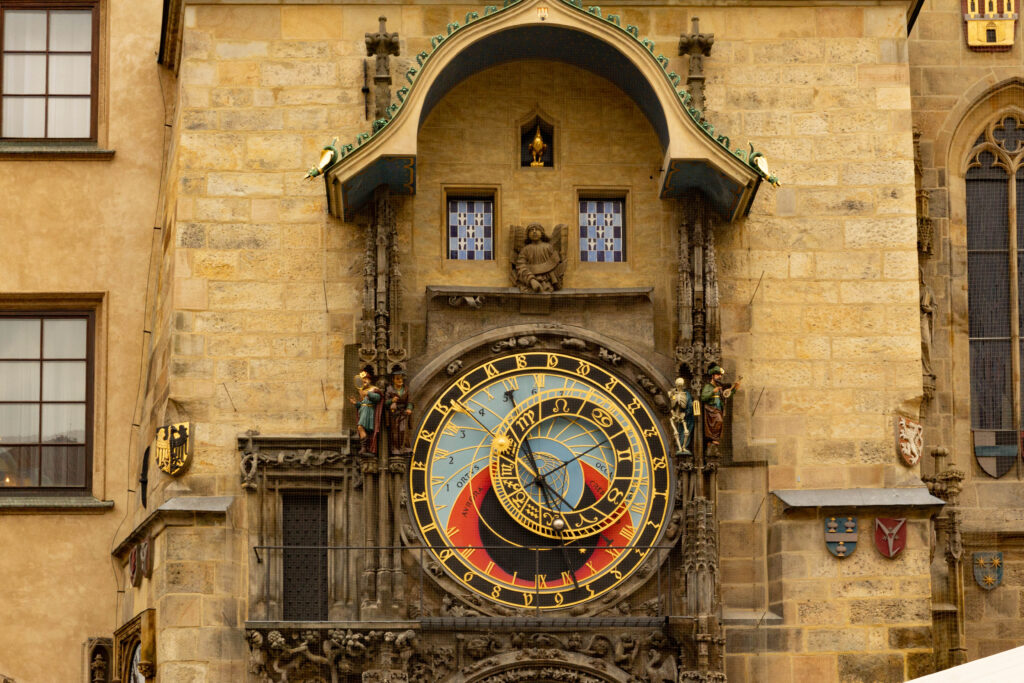
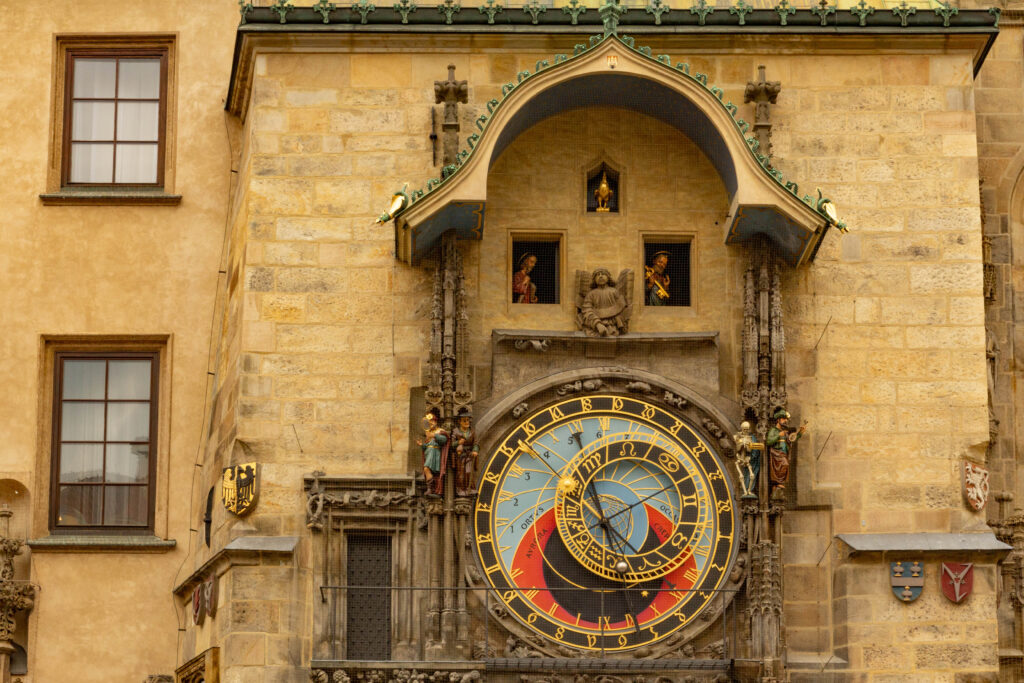
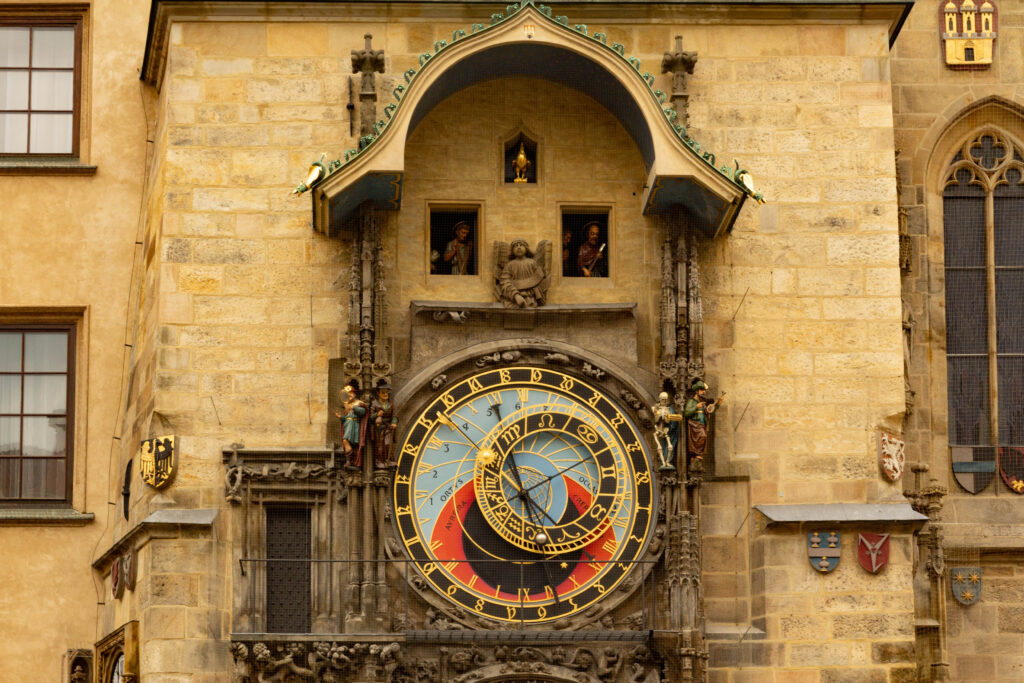

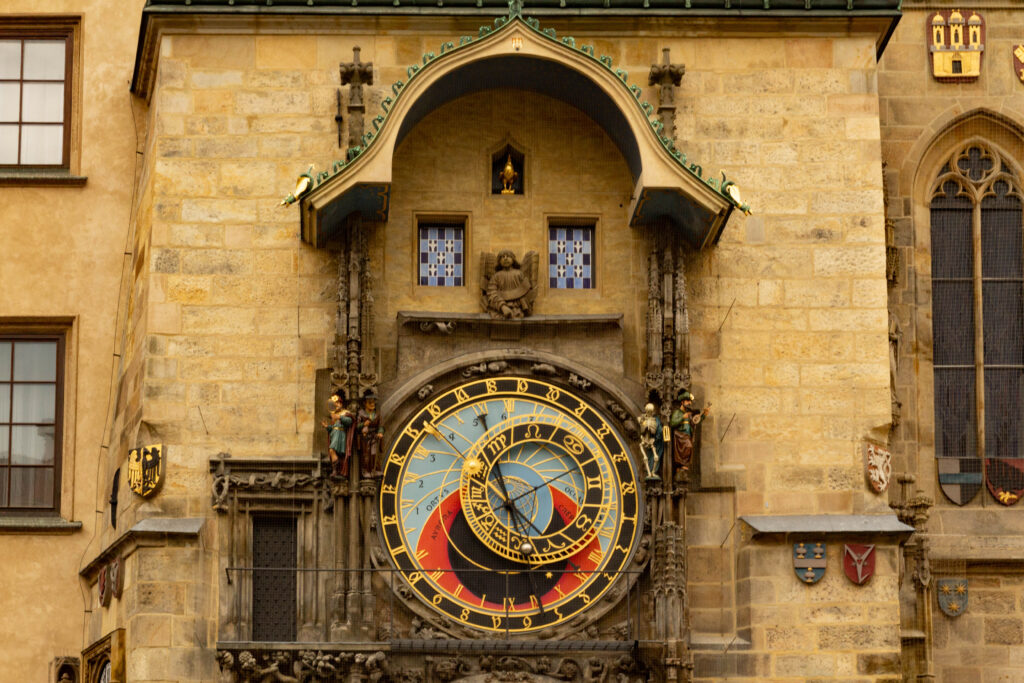
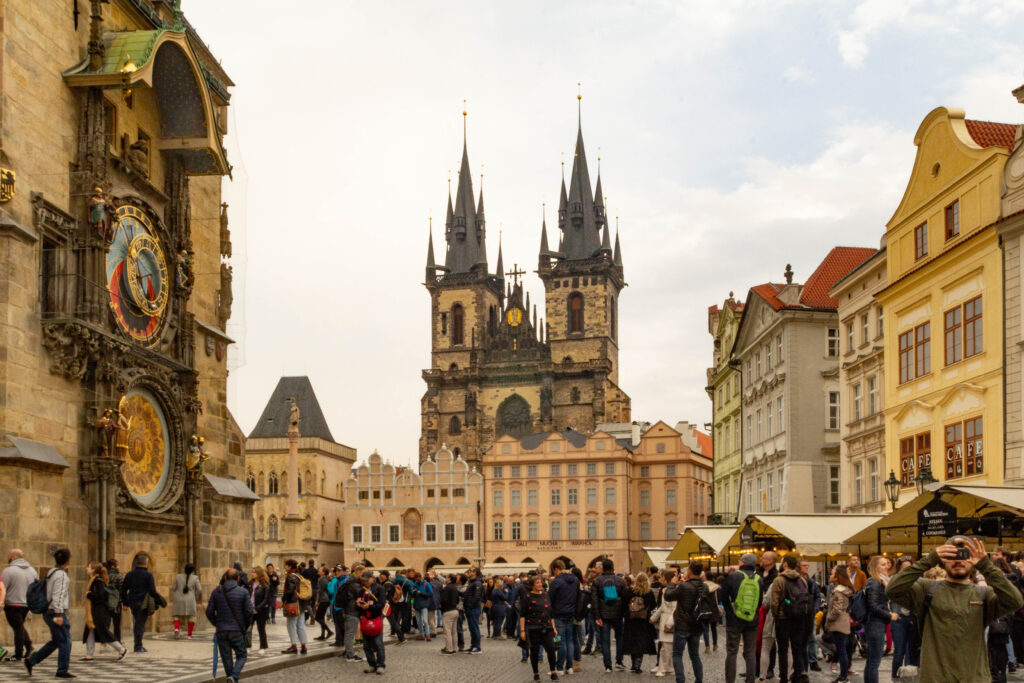
Our next stop was a nearby jewelers, specialising in exquisite pieces made with locally sourced garnets. Our guide advised the ladies to look at the jewelry and for the men to look at the ceiling, probably less for the fact that it was ornately designed and more to ensure that our focus wasn’t on the price tags. The jeweler gave us a little talk about the many precious and semi-precious stones that were mined near to Prague, before telling us all about the possibilities for purchasing his wares tax free and getting them home safely. As Garnet is Vanessa’s birthstone, we were particularly taken by a number of beautiful pieces, and it was really a struggle not to blow the entire holiday budget then and there. There’s still one more day for us to go in Prague, so who knows?
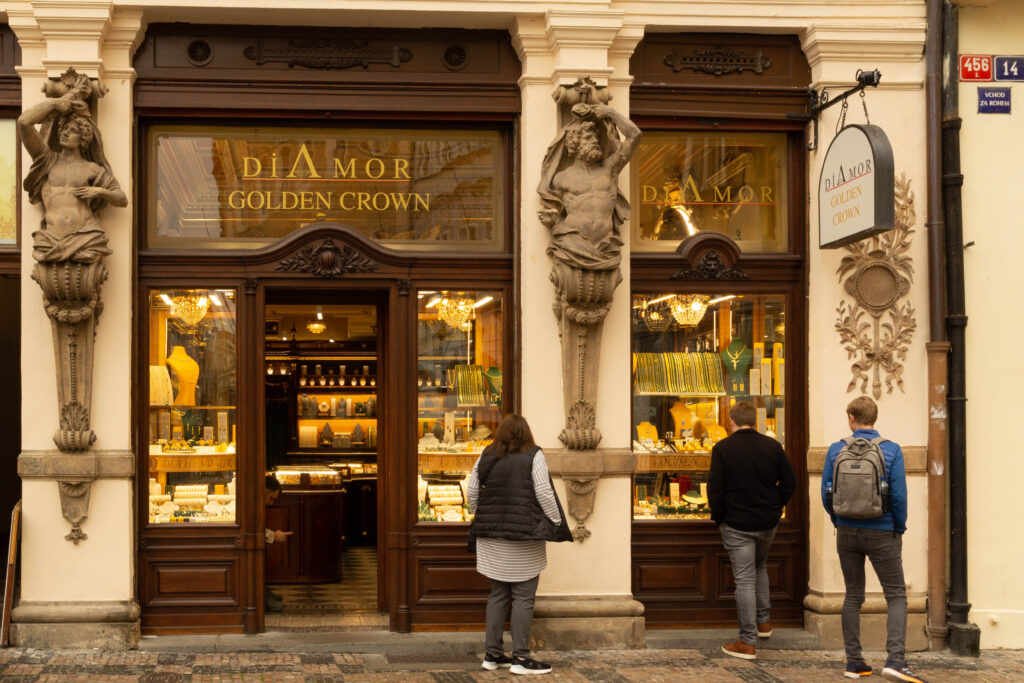
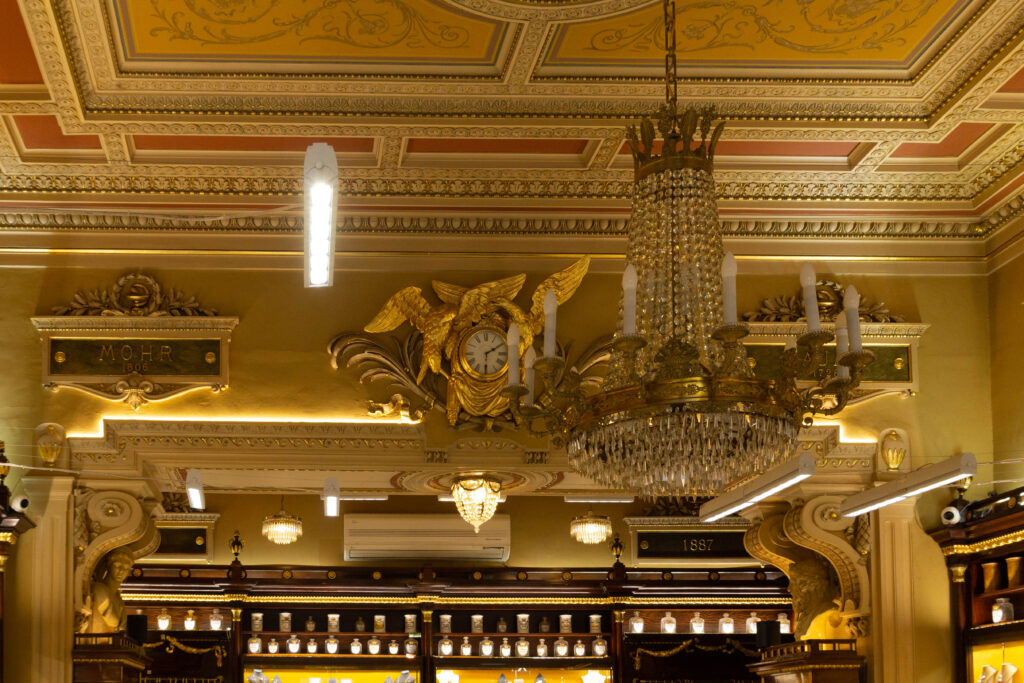
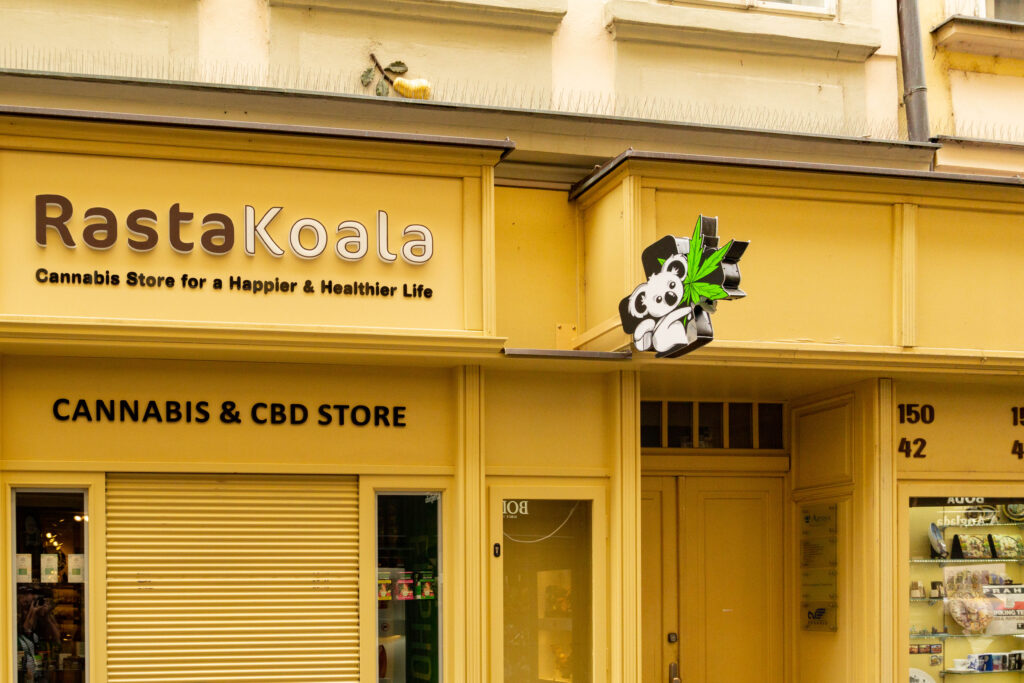

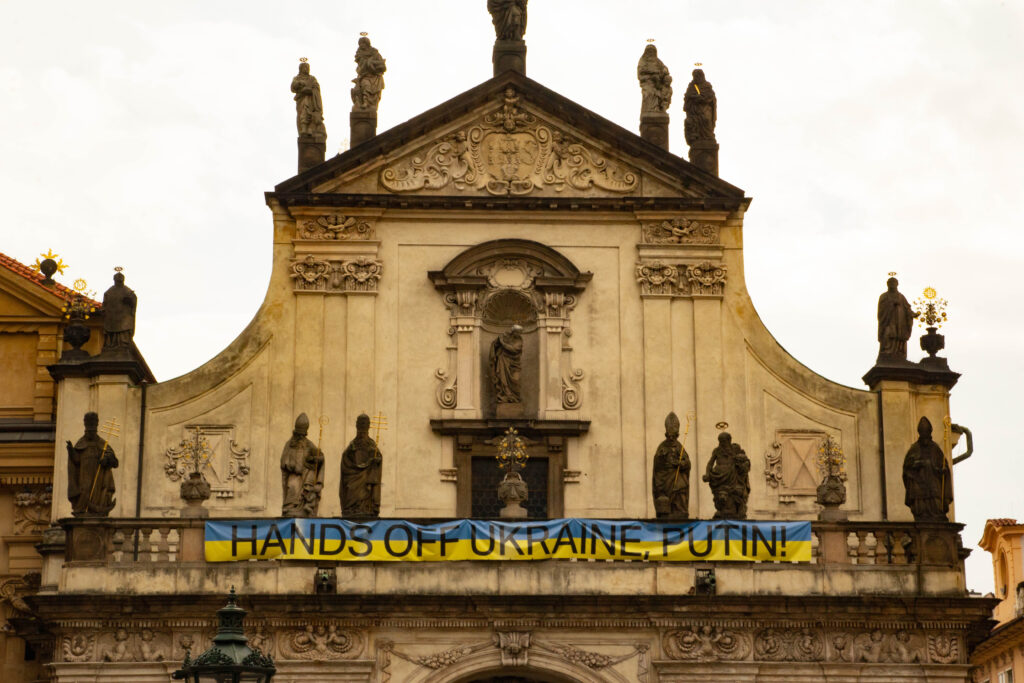
Eventually we came to another 14th Century gate tower, Staroměstská mostecká věž, or Old Town Bridge Tower, which marks the entrance to the iconic Charles Bridge. We paused briefly at the statue of Charles IV where Pavlina explained just how dashing and athletic a king he was.
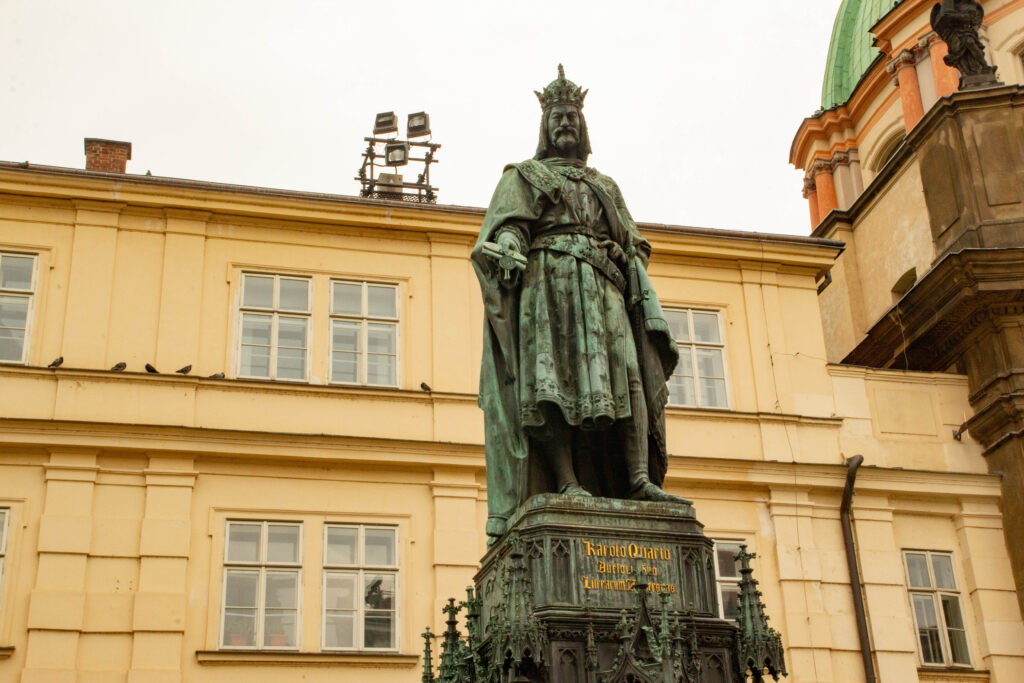
The bridge itself is a striking stone monument from the 14th Century, later adorned with many statues. It’s one of, if not the most visited attractions in the city, and even in the low season it was quickly becoming quite crowded.
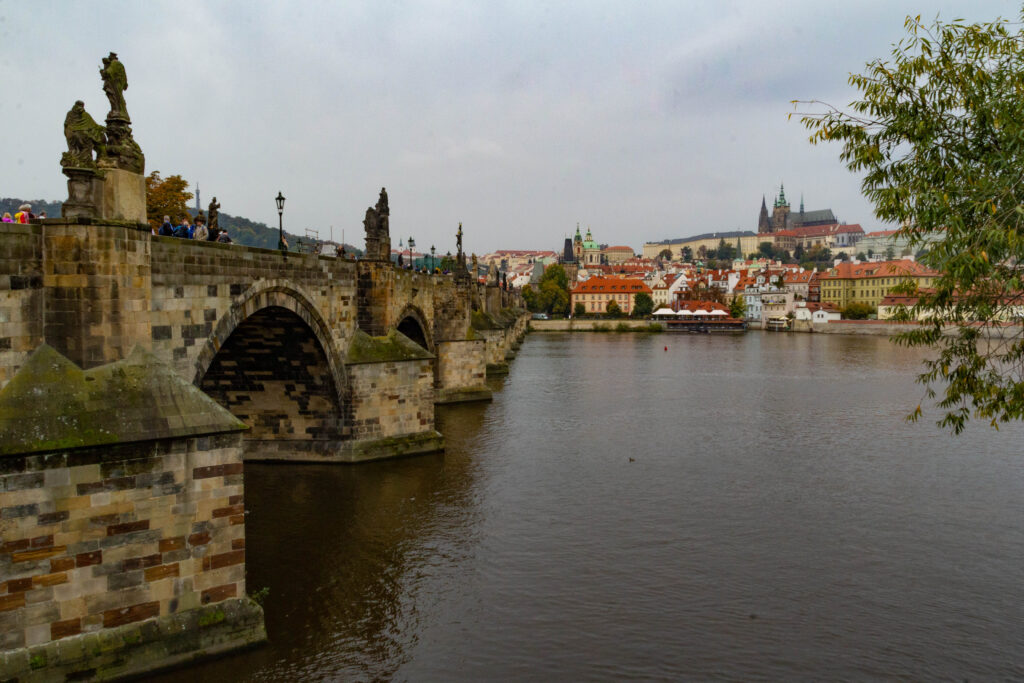
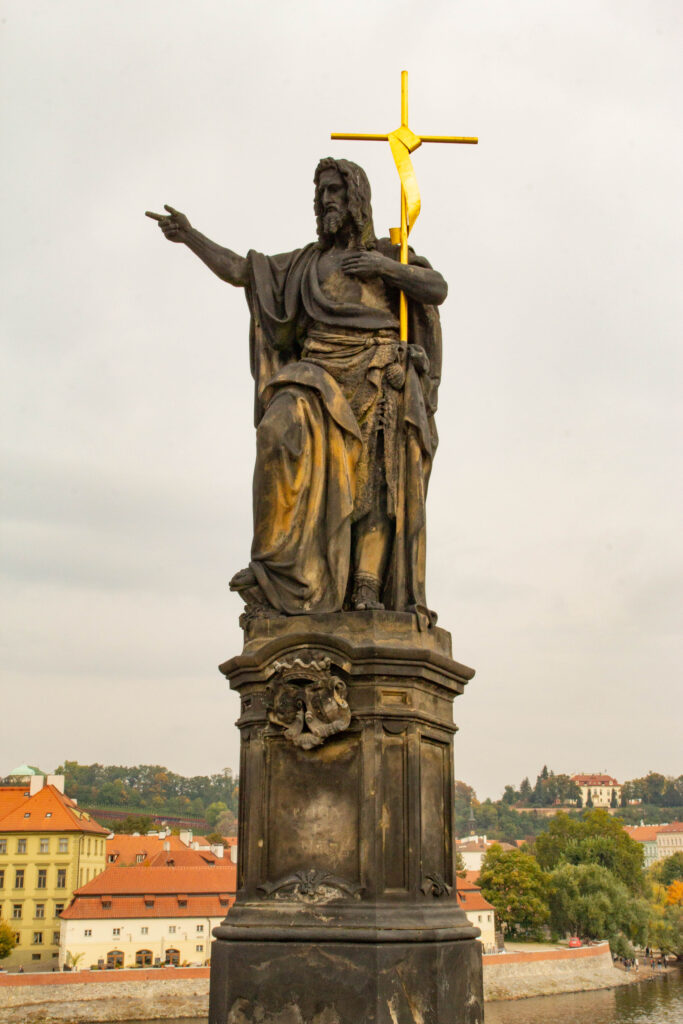
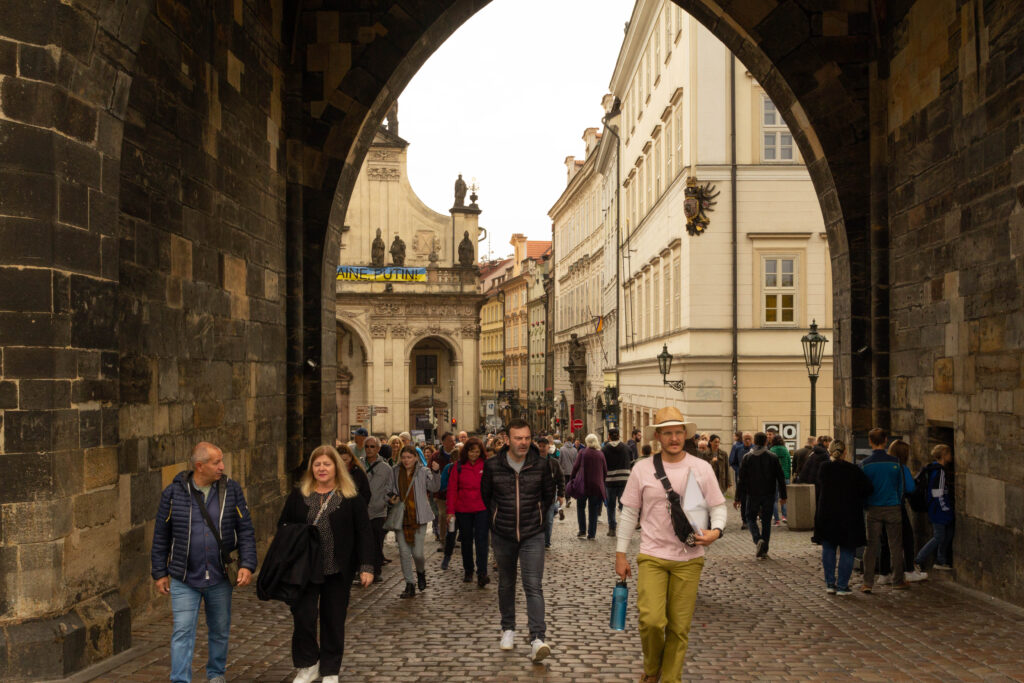
The views from the bridge across the River Vitava towards both the Old Town and the Castle precinct are truly awesome. It’s no wonder that many people consider Prague to be Europe’s most beautiful city.
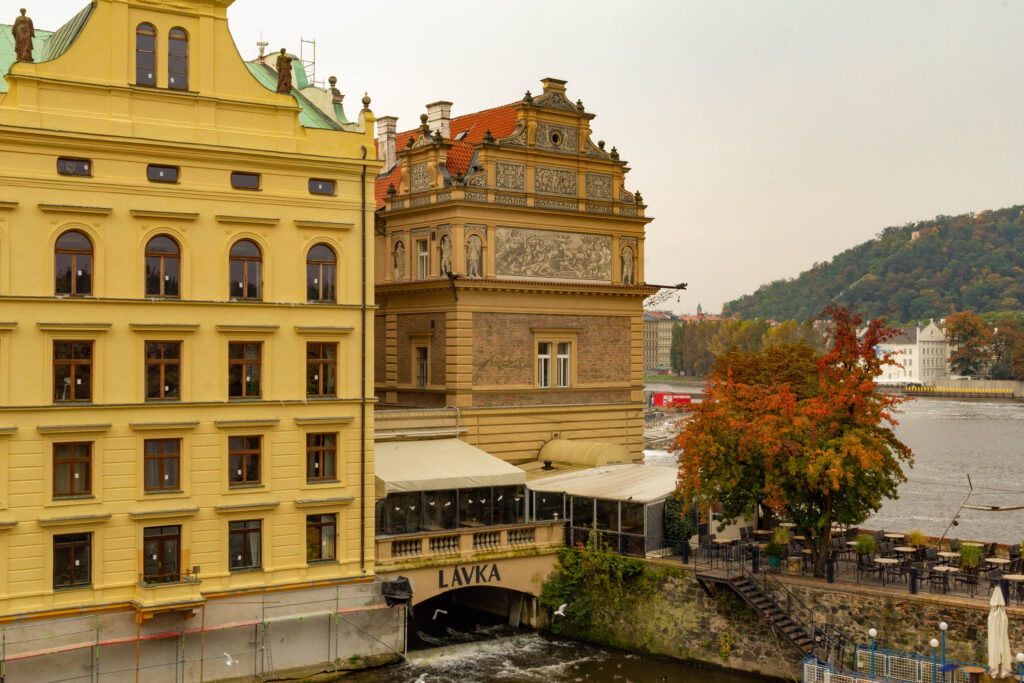
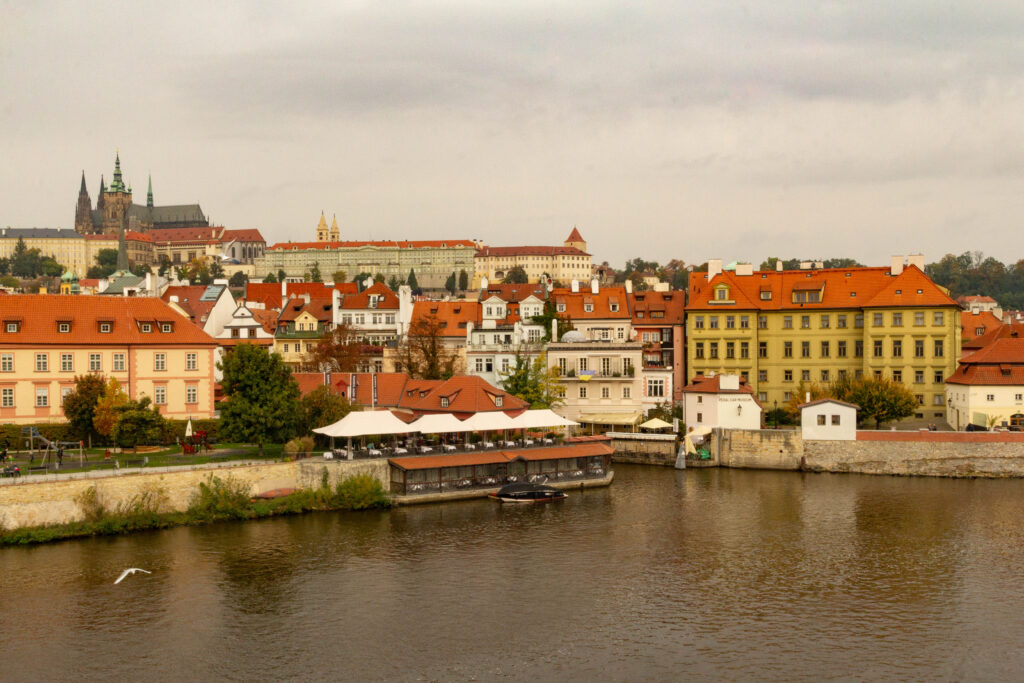
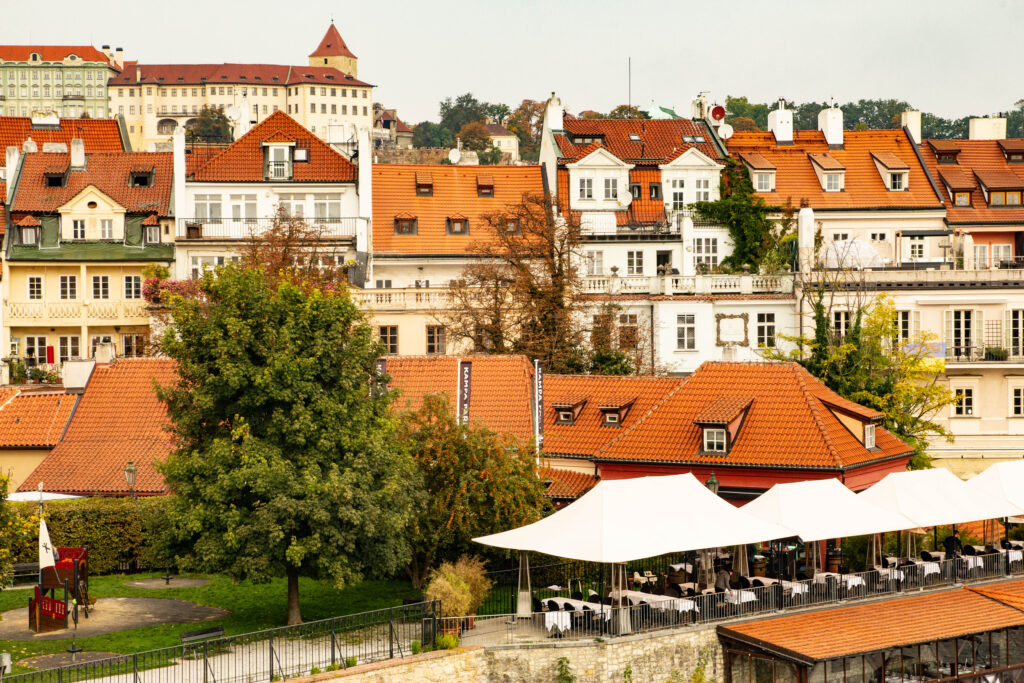
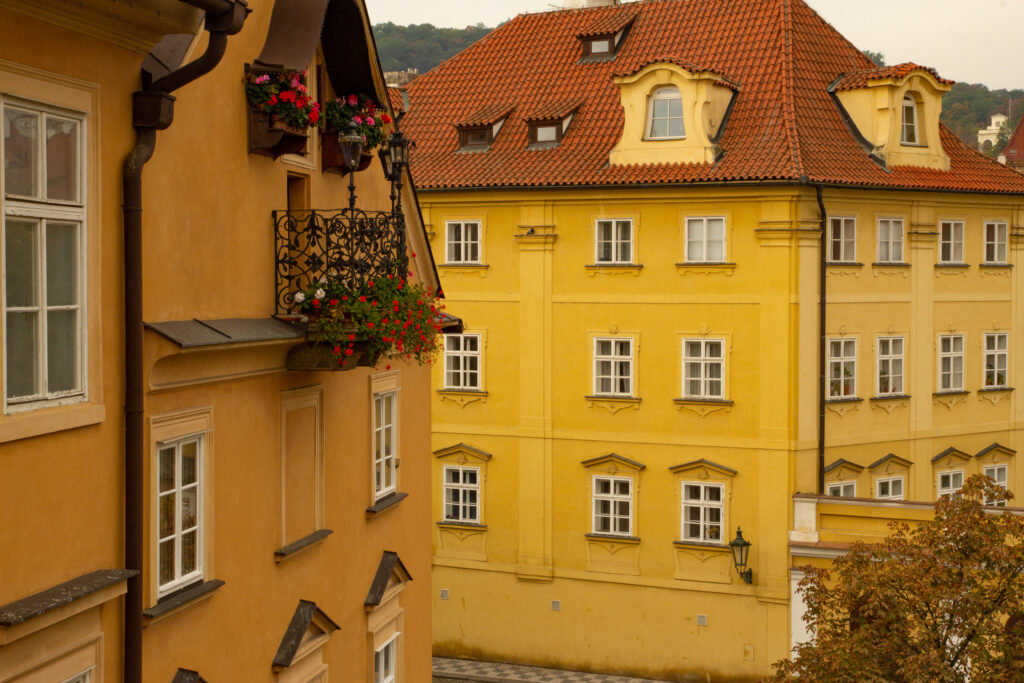
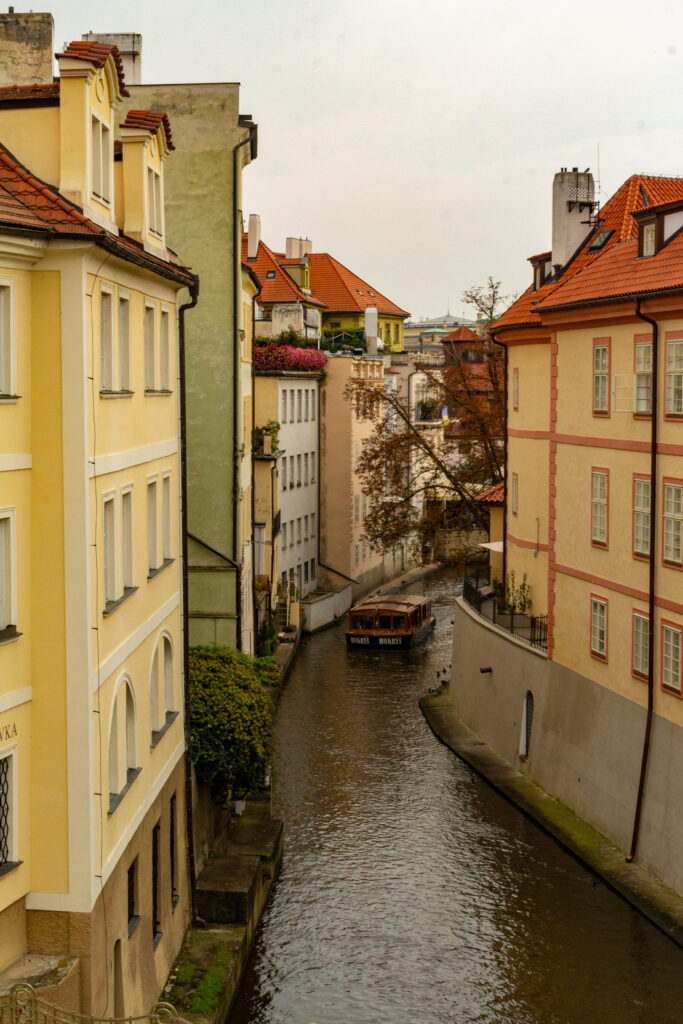
As we entered the castle town, Pavlina called time for a 30 minute break to “go make pee-pee”. Vanessa and I headed around the corner from the main street to a quiet little café with an incredibly ornate painted timber ceiling, where we shared a most delicious apple strudel and a hot chocolate so thick that you could almost stand your spoon up in it. By this stage my plans for dietary restraint were in tatters.
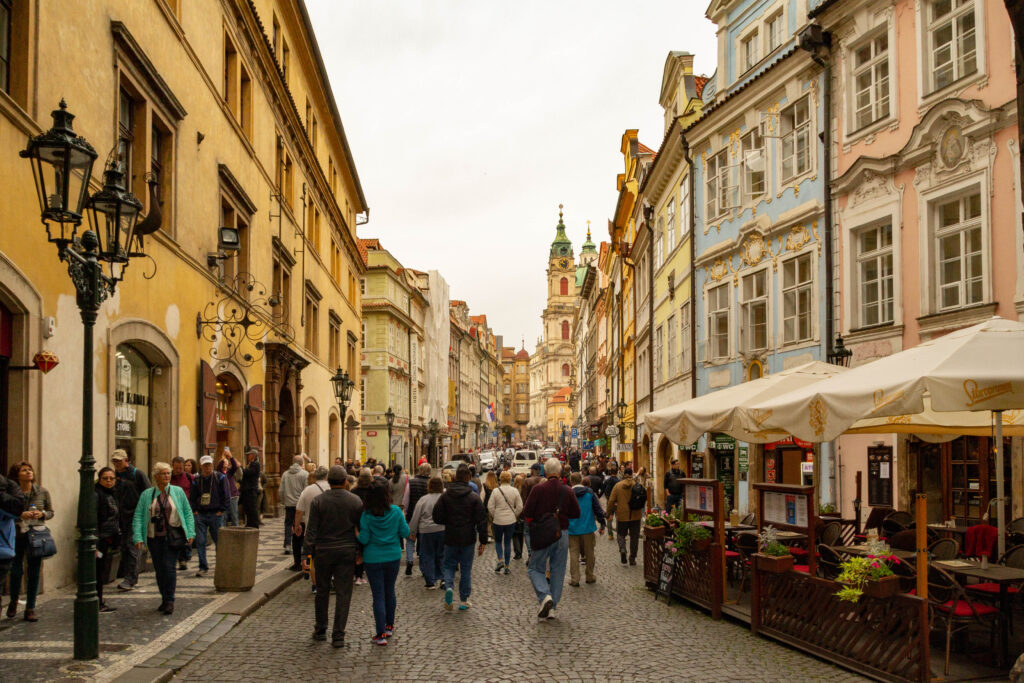
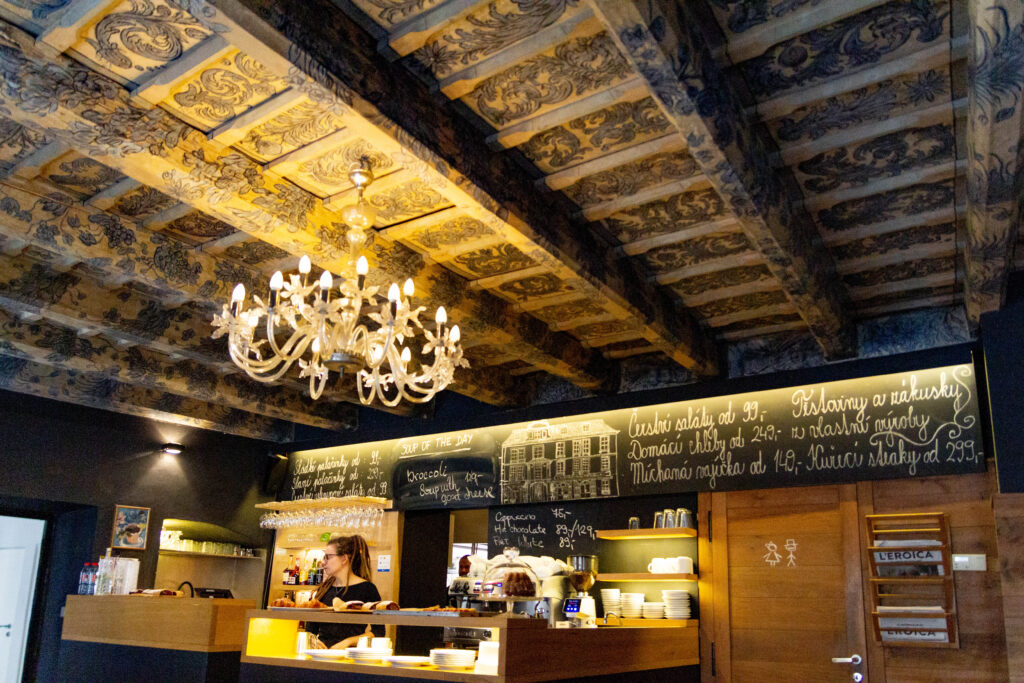
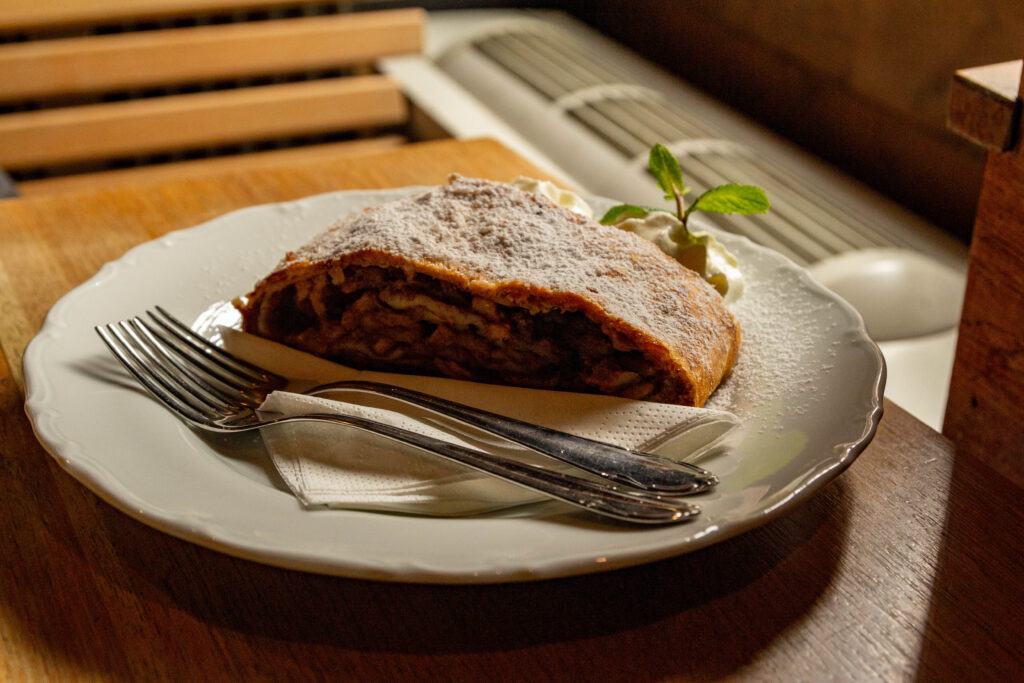
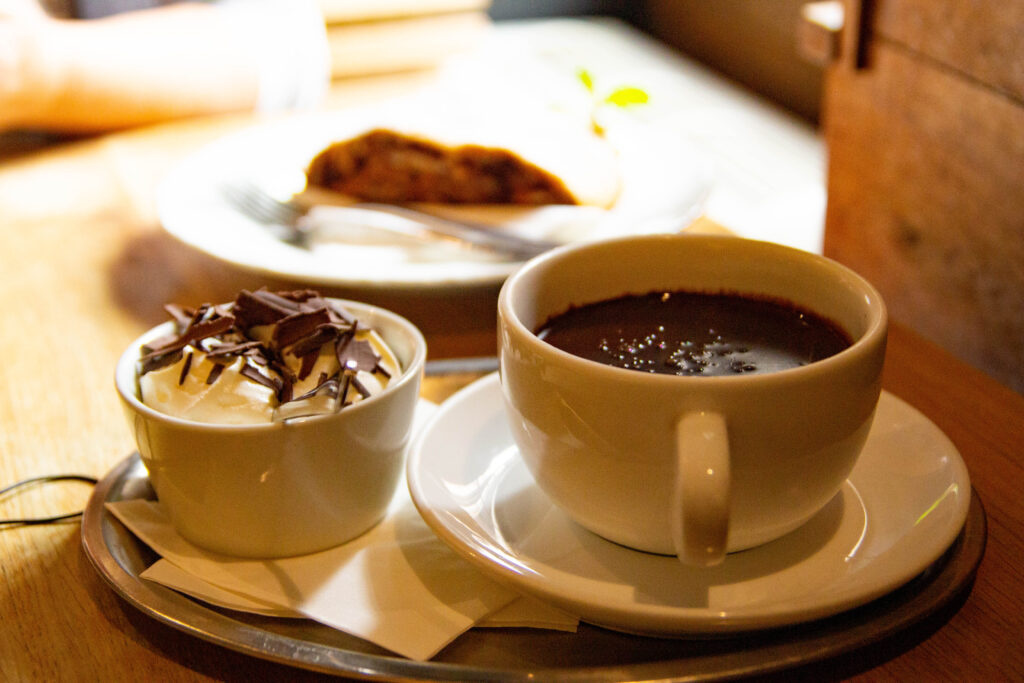
Upon returning to our meeting place under the Lesser Town Bridge Tower we continued our way along the river to the studio of a local artist who specialised in intricate, whimsical paintings of Prague in oils. We were then introduced to the Czech national liquor, Becherovka – made from a secret recipe of about 20 herbs and spices, and definitely something that will get the heart pumping and the legs moving again.

Continuing on, we made our way to the Franz Kafka museum, where Pavlina couldn’t wait to show us an automated statue by controversial Czech artist David Černý. Known as Čůrající postavy, or “The Piss Sculpture”, it features two urinating men with mechanical pelvises, peeing into a map of the Czech Republic.
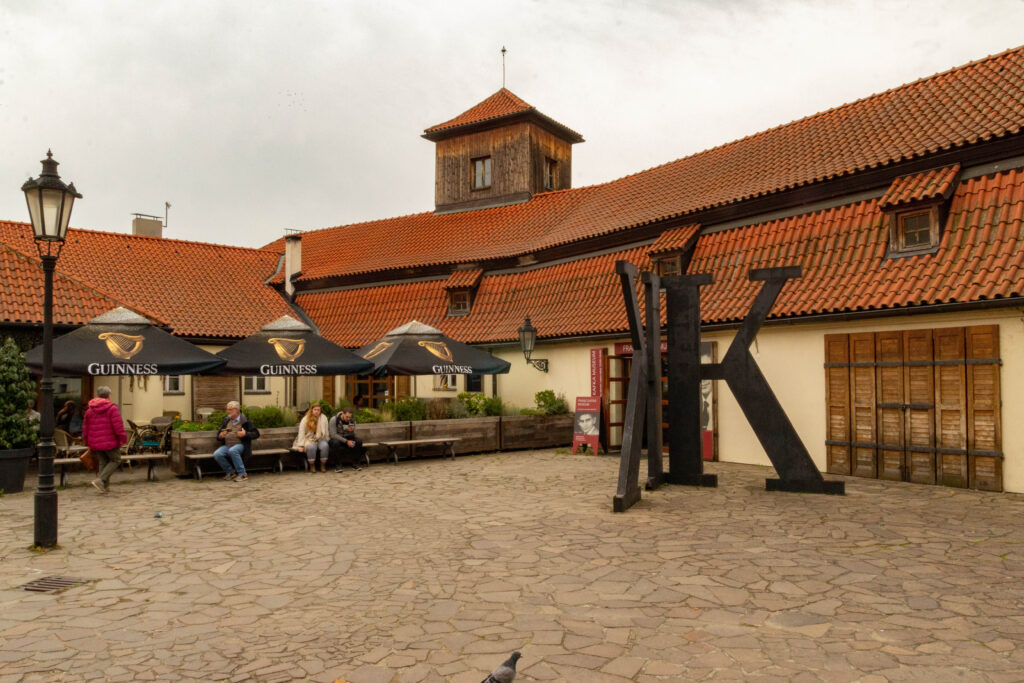

The statues draw a lot of… ahem… attention from tourists, who just love to get their photos taken while giving the men a ‘helping hand’. Fortunately none of our group was quiet so puerile. Oh, wait…
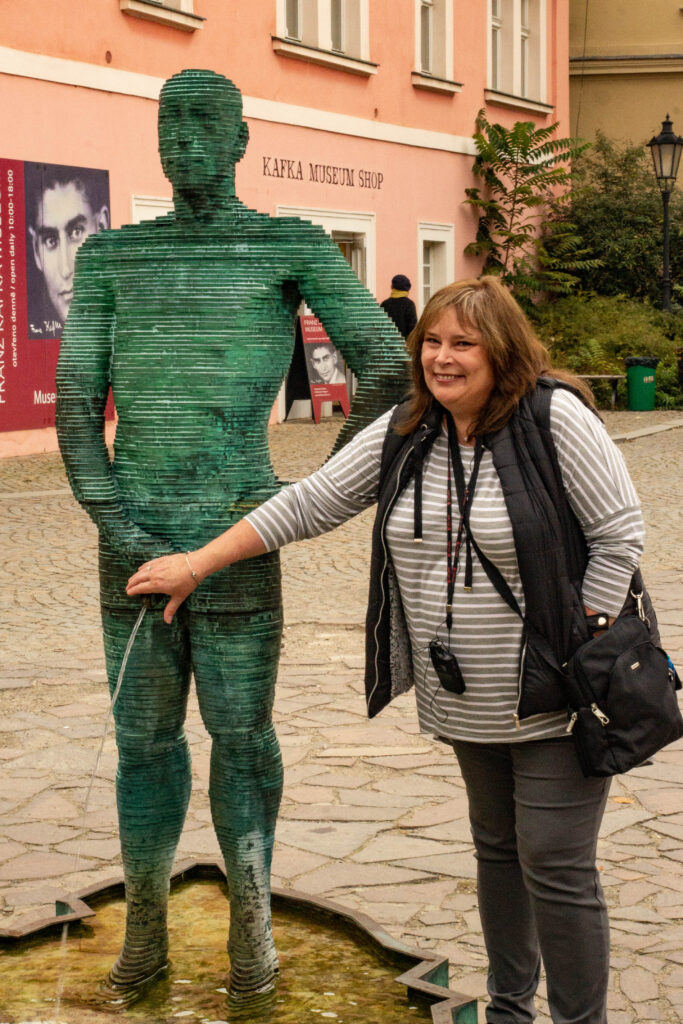
Heading back down to the river, we crossed the Manes Bridge, a far more modern bridge built in the 20th Century that offered a fantastic view of the Charles Bridge.
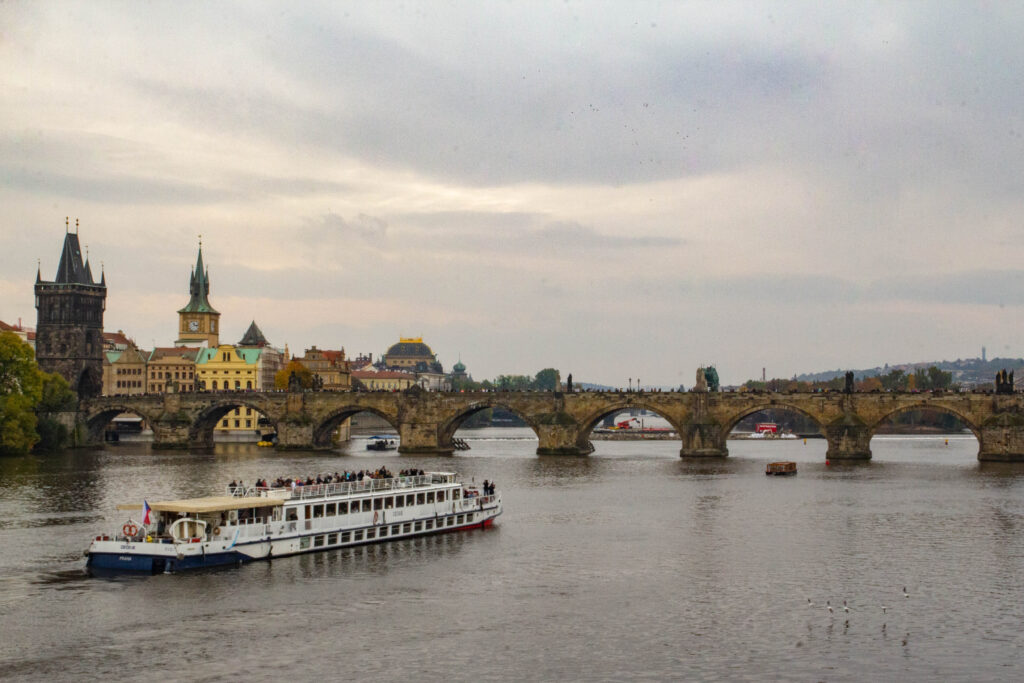
Passing by the neo-renaissance styled Rudolfinum, a 19th Century concert hall that currently houses the Česká filharmonie (Czech Philharmonic Orchestra), we made our way through the Jewish Quarter and emerged back in the Old Town Square just in time for lunch.
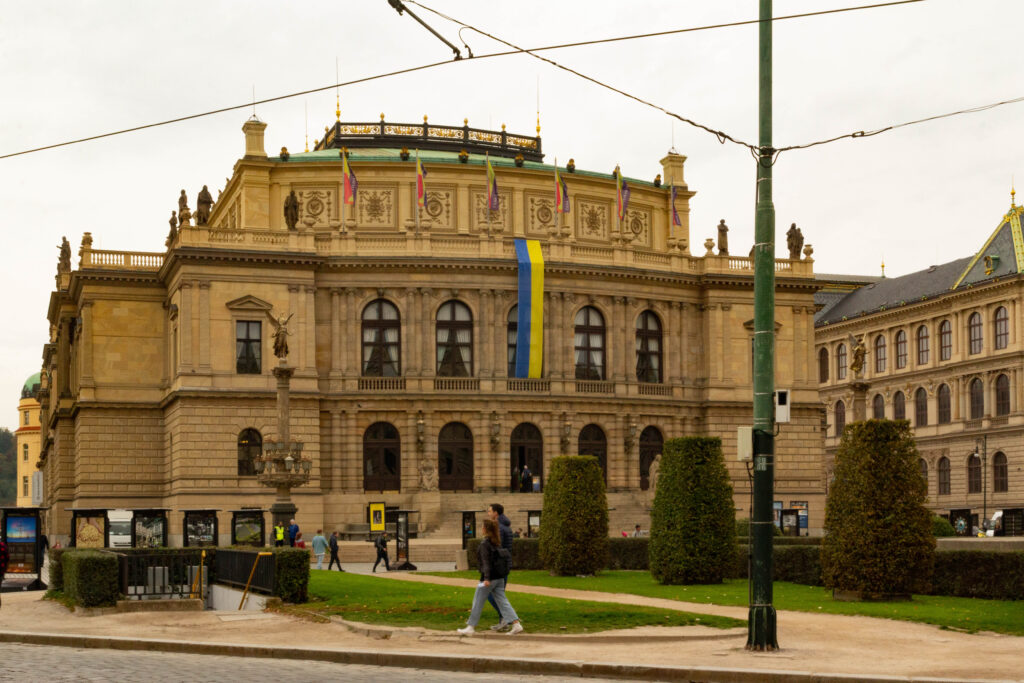
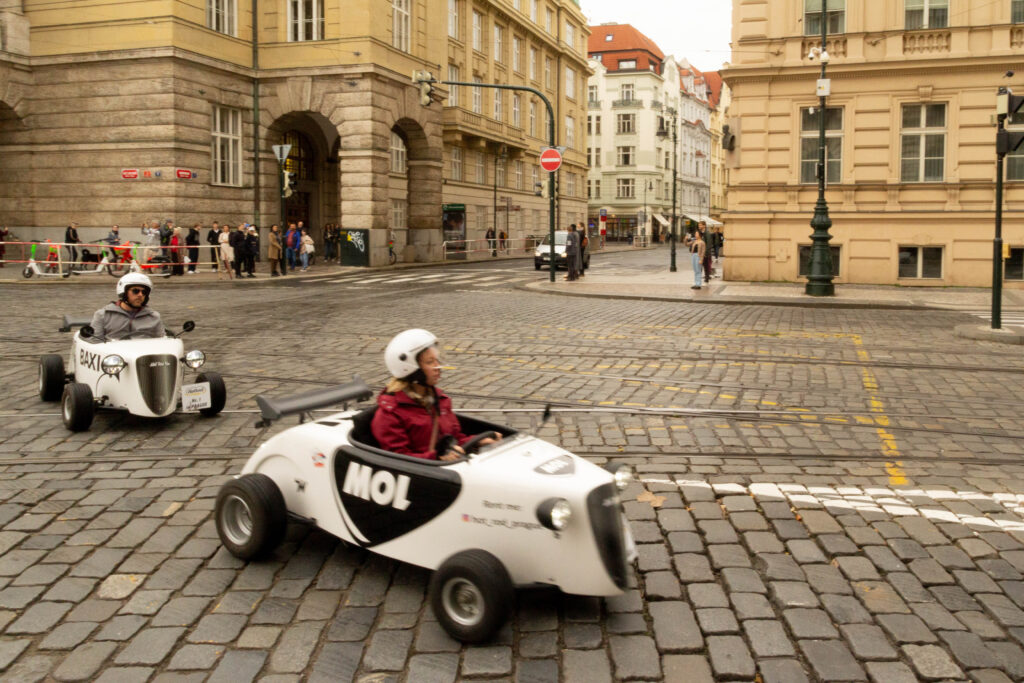
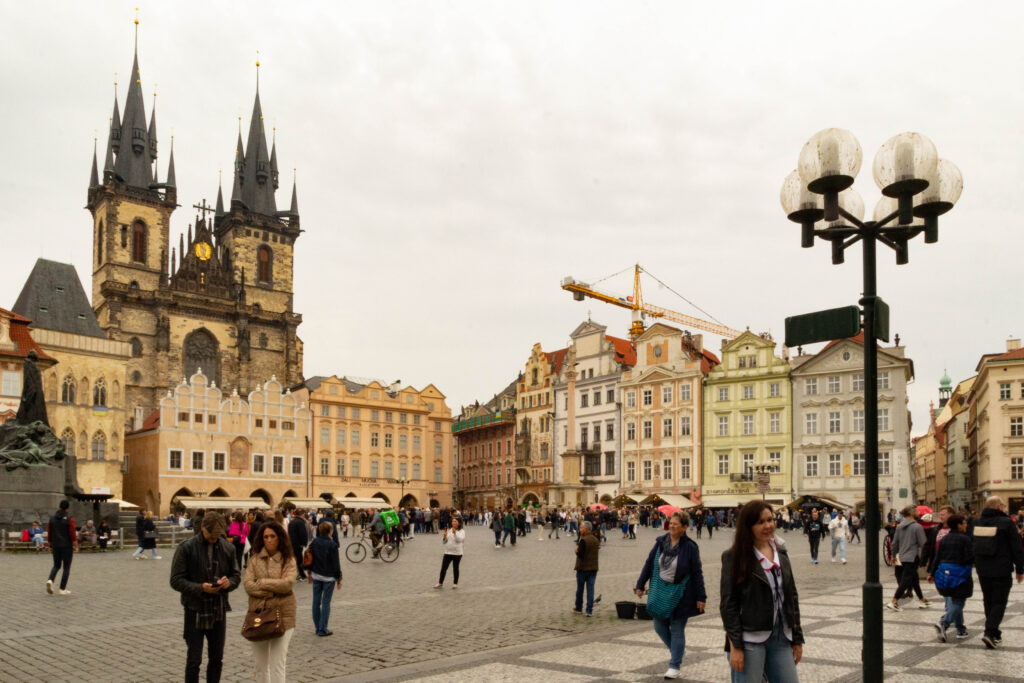
Part 2 – A brief history of Communism in Czech Republic, plus a local beer tasting.
Our group all went our separate ways to make our own lunch arrangements, agreeing to meet back at the hotel at 3:00 pm for the next tour. Vanessa and I first headed into a large shopping complex to try and find me a pair of swimming trunks in anticipation of our upcoming visit to the Budapest thermal baths in a few days time – not an easy task in a city that is heading into its winter season.
I finally managed to find a Quicksilver store that offered one variety at an astronomical price, and after handing over a small fortune we set off to a nearby brewery for lunch, where Vanessa ordered a pork schnitzel and I tucked into a delicious plate of steak tartare with fried bread and copious amounts of raw garlic. All washed down of course with a couple of big foamy pilseners.
After catching up with Pavlina again in the hotel lobby, most of the group split off to do a bus tour of the Strahov Abbey, however four of us opted instead to take a trip to Wenceslas Square to hear Pavlina’s first-hand account of what life was like in Czechoslovakia under the communist occupation.
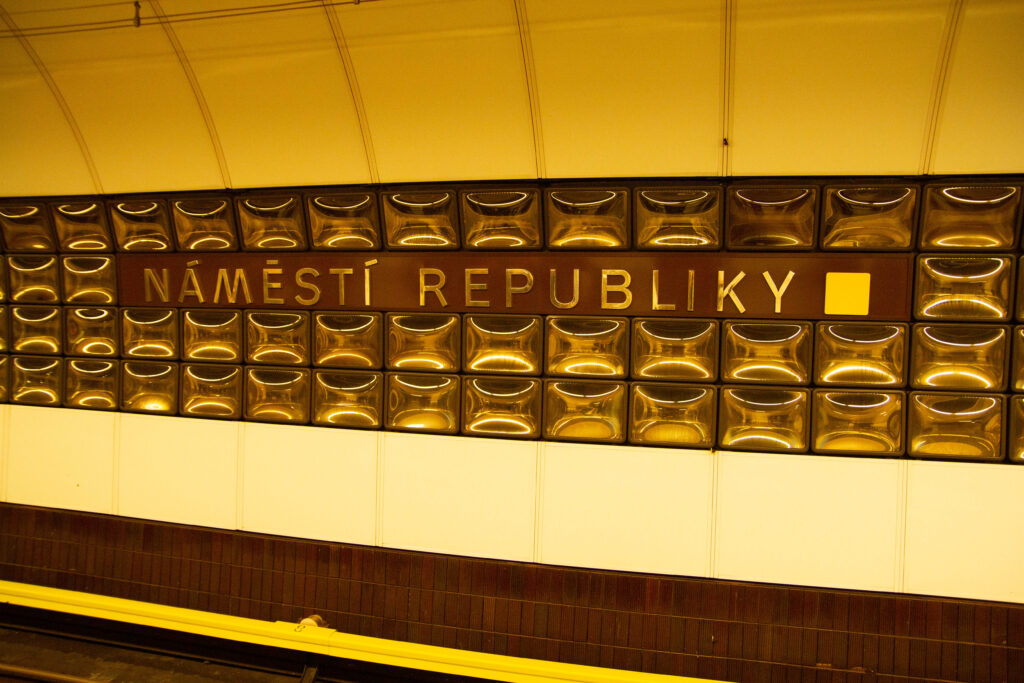
The tour started with a brief trip on Prague’s excellent, although somewhat dated-looking metro system, one of the more positive additions to the city made by the communists. We traveled one stop, where we changed lines and made our way through the next platform and out on to Wenceslas Square.
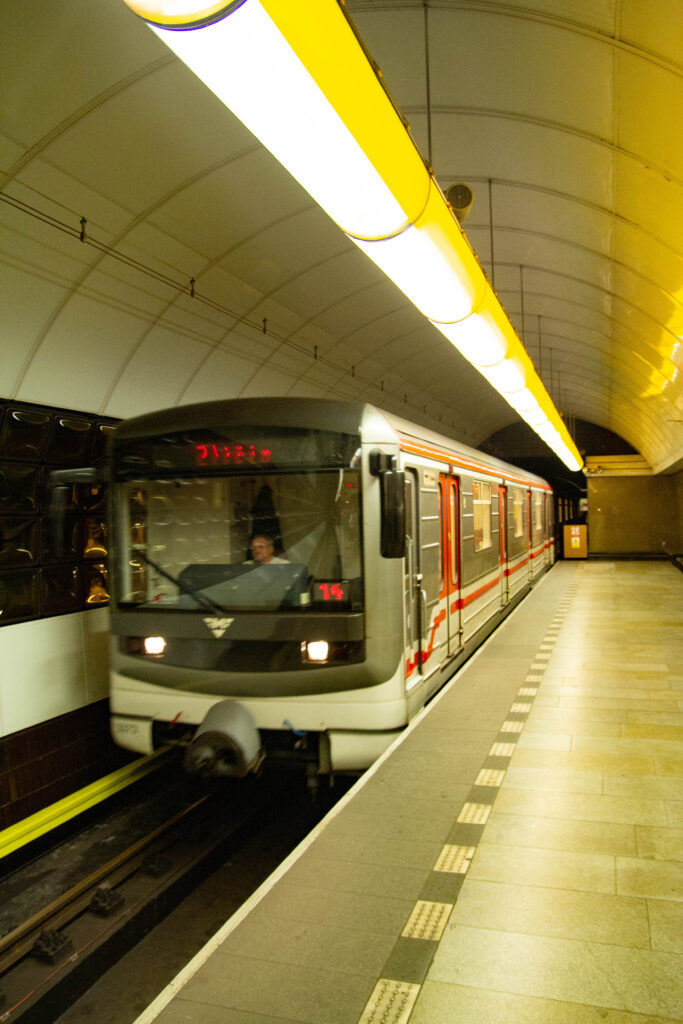

Wenceslas Square is rooted in Czech history as a place where many big events have taken place. In 1918 it was the site of the Czechoslovak Declaration of Independence, where the Czechoslovakian nation proclaimed its independence from the former Austro-Hungarian Empire. In 1945 it was the scene of mass demonstrations against Nazi occupation, and in 1969 it was the scene of further uprisings against the communist occupation.

Then came the Velvet Revolution of 1989, with mass student protests that eventually led to the end of 41 years of Soviet occupation and the beginning of a new era of democracy. Four years later Czechoslovakia peacefully split into two separate countries – the Czech Republic and Slovakia.
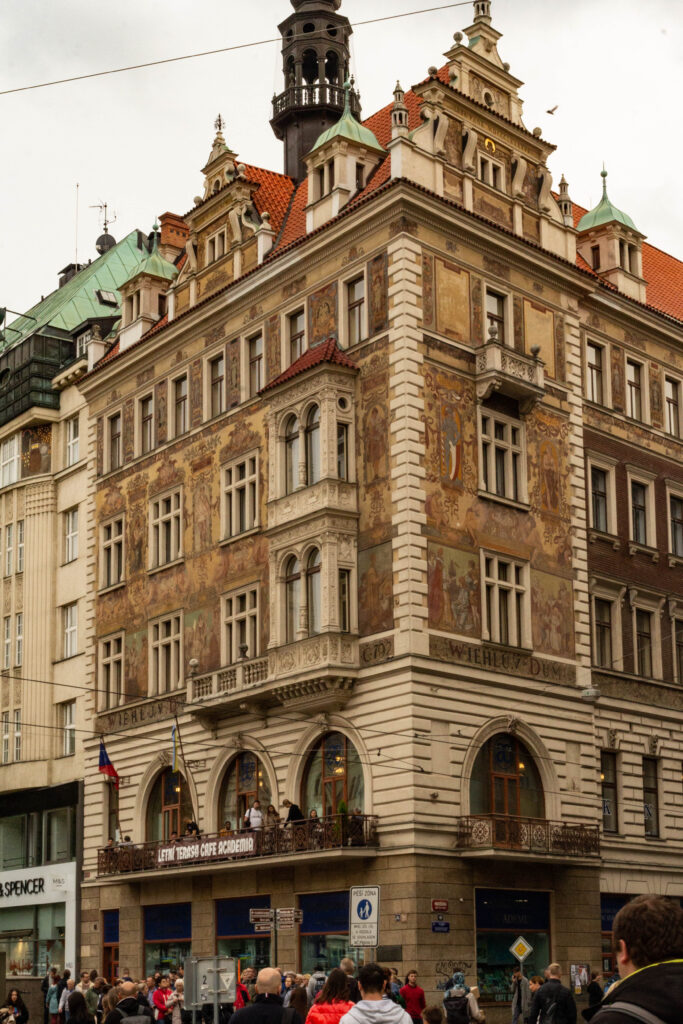
It was really interesting to hear Pavlina recount tales of what life was like under communism – tales of neighbours spying on neighbours and reporting each other to the secret police, tales of shortages and long queues for essentials like bread, toilet paper and sanitary items. She told us of a young boy in her class whose German father was given permission to travel to Germany for business – when he questioned the doctrine that they were being taught at the school about how much better off those under communist rule supposedly were, his parents were hauled in and beaten, and stripped of any further privileges.
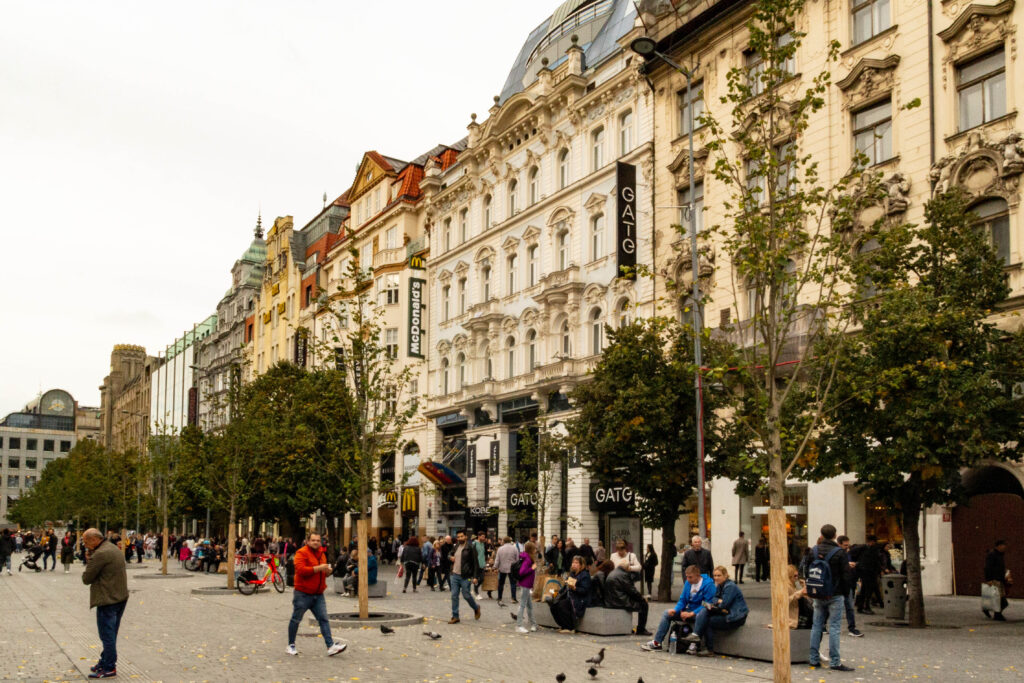
It seems hard to imagine today, when you sit in the square that is dominated by huge department stores, that not too many years ago this was happening, however Pavlina explained that for many people of her mother’s generation it is still quite raw. She said her mother still feels the need to stop and look whenever she sees a queue as there must be something worthwhile, and to this day she still insists on taking private conversations behind closed doors, as ‘you never know who might be listening’.
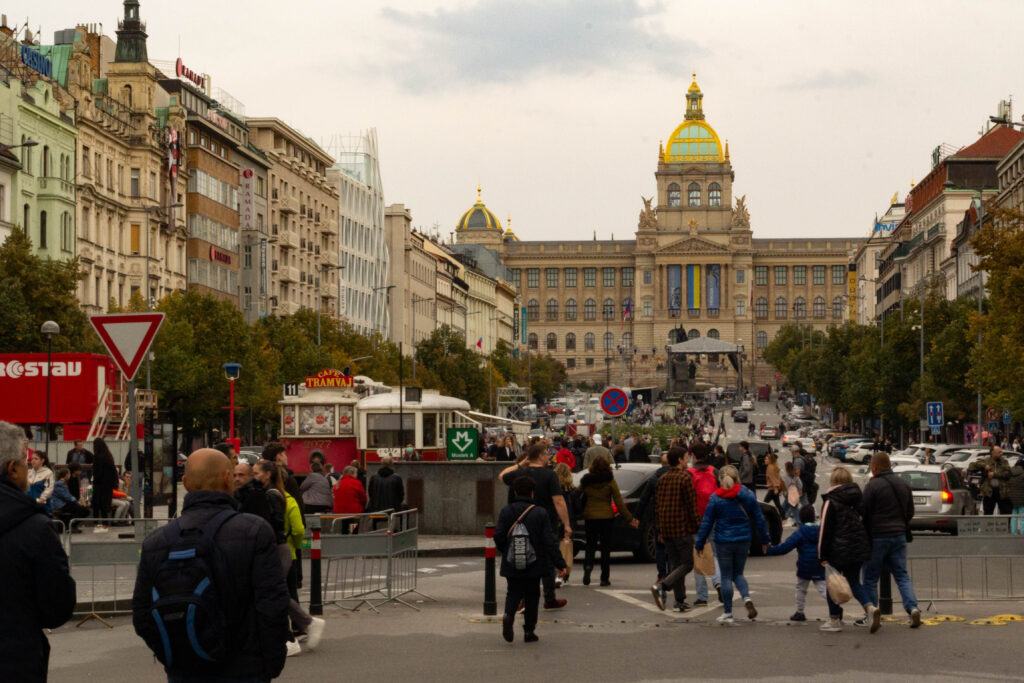
We finished the tour on a much cheerier note, with a walk to a local brewery where we tried some of the delicious beers on offer. Pavlina ordered a local delicacy for us to try – a large, coiled and quite spicy sausage served with fresh horseradish, sweet mustard and sauerkraut and accompanied by fried bread, beery cheese, duck pate with cranberries and copious amounts of raw garlic. We struggled our way through all that before hopping onto a tram for a couple of stops back to the hotel. All in all, a wonderful end to a wonderful day in this fabulous city.
Back at the hotel a group of us got together and headed off to a local restaurant, with many of us eager to sample some more local dishes. Several of the group ordered garlic soup to start with (no wonder there are no vampires in Prague), while Vanessa opted for a crispy roast pork knuckle, and I decided on a delicious beef goulash with potato dumplings. To hell with the diet!
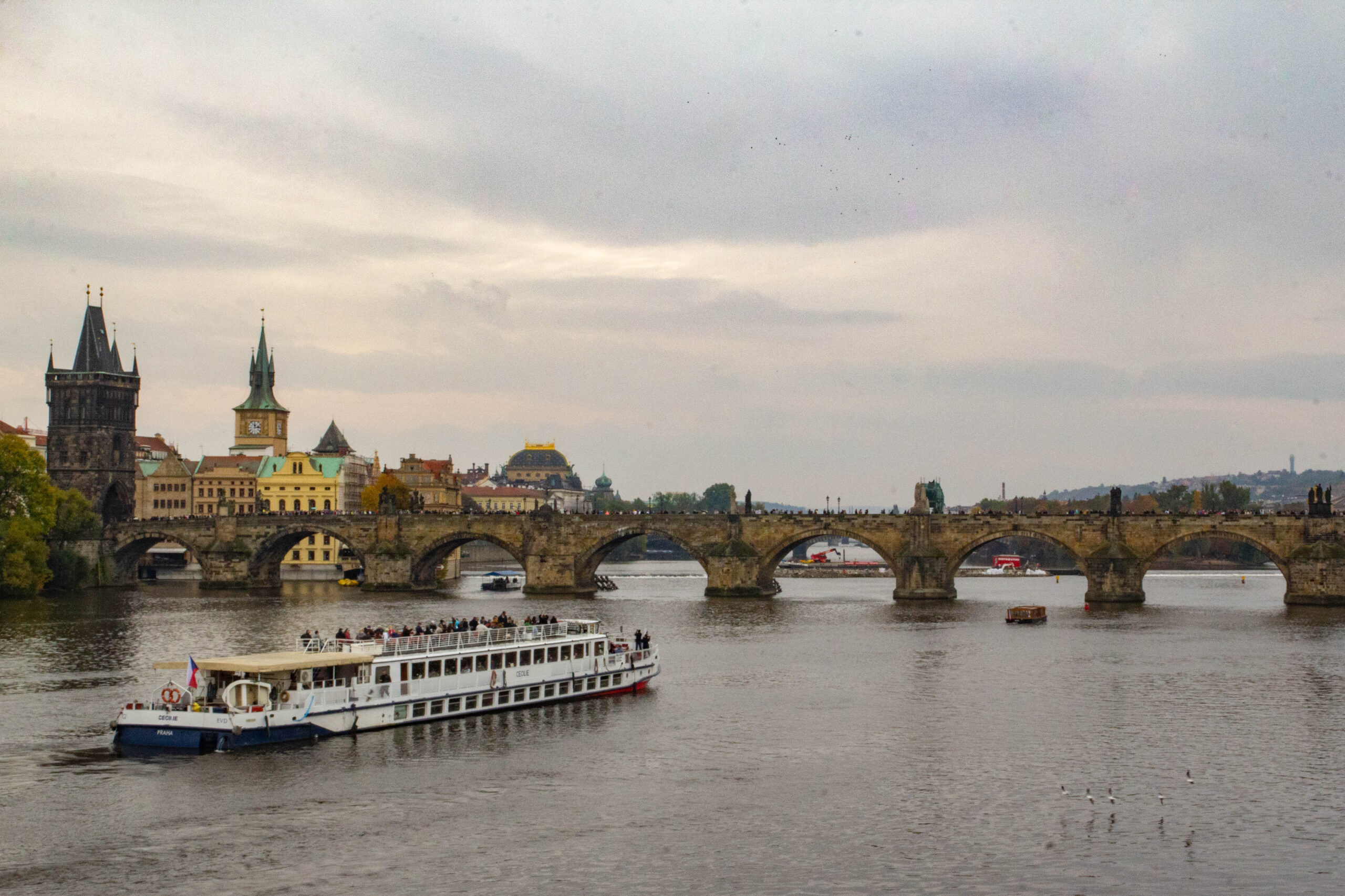
Isn’t Prague a beautiful city, steeped in history. We stayed there for just a couple of days, could easily have stayed much longer.
Very beautiful indeed – part of me kinda wishes we were staying on for the whole time, but then knowing what other wonderful places await us is also exciting.
Hey Guys, looks like heaps of fun, I always laugh when I’m trying to access a building in Australia in my wheelchair and it’s not accessible, and the owner will say “sorry the building is very old, it was built in 1970″… I tell them about the 14th or 15th century buildings I have accessed in Europe, and they even have a lift! they have nothing to say! Love the photos and story, keep em coming, have fun, stay safe and keep WARM!
Just love the pics and the commentary Mark. Ness don’t you ever lose any opportunity to show your cheeky side!! I can’t wait until the time we can travel there too. Keep the pics coming. Love ya both, Rose & Ant